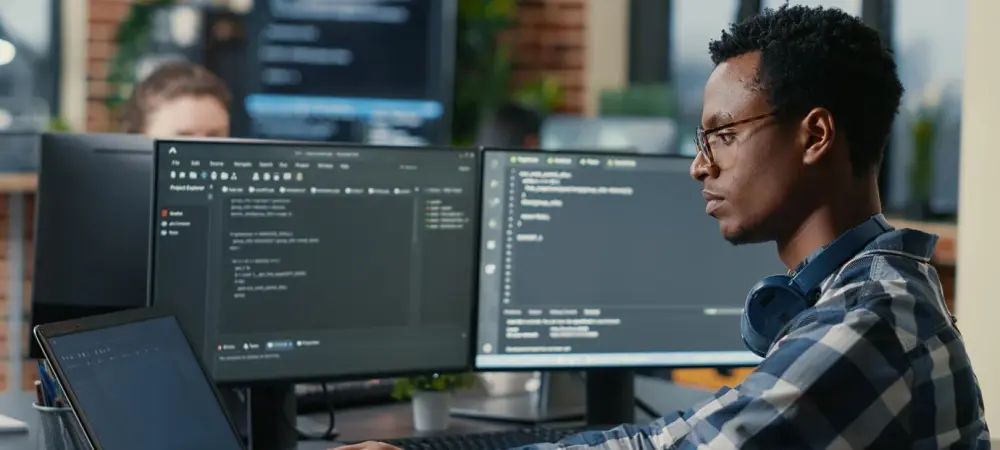The critical state of software supply chain security has become a prominent issue among industry leaders, particularly after a global survey highlighted the lack of visibility into potential risks. With almost half of C-suite executives acknowledging the deficiency in their organizations’ ability to fully comprehend software supply chain risks, industry stakeholders are grappling with numerous challenges. The urgency of this matter is further underscored by findings that demonstrate substantial vulnerabilities, where firms with lower visibility suffered far higher breach incidences. As technology continues to evolve, stakeholders are questioning whether artificial intelligence can effectively revolutionize the protection of the software supply chain.
Understanding Software Supply Chain Security
Software supply chain security encompasses the strategies and measures employed to protect software processes from development to deployment. It involves ensuring that every stage of software creation, from coding to distribution, is secure against vulnerabilities. The landscape is notably complex, influenced by diverse technological advances and regulatory pressures. Key market players in this space include tech giants, security firms, and emerging startups, all seeking to offer robust security solutions. Regulations are constantly adapting to the evolving threat landscape, perpetuating a dynamic environment that industry leaders must navigate. In the current state, software supply chain security is more significant than ever. With growing reliance on software for business operations, any compromise in security can have widespread ramifications. Emerging technologies, particularly AI, are being explored for their potential utility in preemptively detecting and neutralizing threats, though the involved intricacies call for robust systems and processes. The involvement of diverse global entities further complicates the spectrum, as compliance with multifaceted legal and regulatory requirements adds more pressure.
Trends Shaping the Software Supply Chain Security Industry
Emerging Technologies and Market Drivers
The software supply chain security industry is heavily influenced by progressive trends, chiefly involving technological advances such as artificial intelligence, machine learning, and automated systems. AI stands out as a critical component, as it offers the potential to streamline risk detection processes and enhance security measures. Evolving consumer behavior also poses new challenges, with increasing demands for transparency and robust security assurances. Market drivers are actively molding new paradigms, presenting opportunities for organizations to innovate in devising new security solutions.
The move toward automation and orchestration in the sector marks a turning point. Application security posture management (ASPM) and DevSecOps automation continue to evolve, bolstered by investments in Security Composition Analysis (SCA) tools and API security methods. These technological advancements signify a shift toward organizational accountability, with collaborative frameworks between development and security teams striving to ensure comprehensive protection.
Market Data and Growth Projections
Data reflects notable development trends within the software supply chain security domain, with robust indicators pointing to exponential growth in the forthcoming years. The prioritization of collaborative security measures has translated into increased investments aimed at strengthening application security landscapes. Projections indicate that this sector will continue to flourish, supported by ongoing trends and technological advancements. Future forecasts predict continued expansion in the adoption of advanced security measures, spurred by organizations keen to stay ahead of cybercriminal activities. Market data showcases positive growth trajectories, with organizations channeling resources toward security enhancement initiatives. As this sector progresses, stakeholders remain hopeful about its potential to redefine conventional security practices.
Overcoming Challenges in Software Supply Chain Security
Software supply chain security faces numerous complex challenges intricately linked to technological, regulatory, and market-driven factors. Obstacles range from infrastructural weaknesses to regulatory ambiguities that can complicate security measures. Companies grapple with fragmented processes, hindering timely detection and response to emerging threats.
To overcome these challenges, organizations are adopting comprehensive approaches, emphasizing the alignment of security measures with technological advancements. Regular audits, compliance reviews, and investment in cutting-edge technologies are emerging as key strategies. Additionally, fostering synergy between development and security teams remains critical, as collaborative action enhances security outcomes and addresses vulnerabilities proactively.
Regulatory Landscape and Compliance
The regulatory landscape surrounding software supply chain security is diverse and ever-evolving, presenting both challenges and opportunities. Laws and standards governing the industry call for stringent compliance measures, forcing organizations to adapt their practices to ensure alignment with contemporary security requirements. Regulations cover a myriad of aspects, from data encryption to software distribution protocols, underscoring the importance of compliance.
The role of compliance in shaping industry practices cannot be underestimated. It compels organizations to elevate security measures, fostering an environment that prioritizes robust accountability frameworks. Organizations that proactively engage with evolving regulations are better positioned to leverage these to improve overall security posture.
Future Directions for Software Supply Chain Security
The future of software supply chain security is promising, characterized by potential opportunities provisioned by emerging technologies and shifting market paradigms. AI and machine learning are poised to redefine security landscapes, offering capabilities that enhance surveillance and adaptability. Market disruptors, innovation, and evolving consumer preferences collectively suggest that the industry is on an upward trajectory. Future growth areas include the integration of advanced technologies to preemptively forecast threats and mitigate risks. As the global economy continues its technological evolution, security remains a paramount concern. Organizations are progressively embracing changes, implementing regulatory compliance and fostering a culture of innovation to stay competitive.
Conclusion and Recommendations
In light of growing security concerns, this report emphasizes the pivotal role of technology in addressing software supply chain security challenges. Organizations must invest in AI-driven tools and enhance visibility to mitigate risks effectively. Enhanced collaboration between development and security divisions should be prioritized to accelerate collective security initiatives, while organizations should strive to adapt regulatory mandates to bolster their security frameworks. With a focus on innovation and adaptation, the industry is well-positioned to overcome enduring challenges and seize emerging opportunities.

